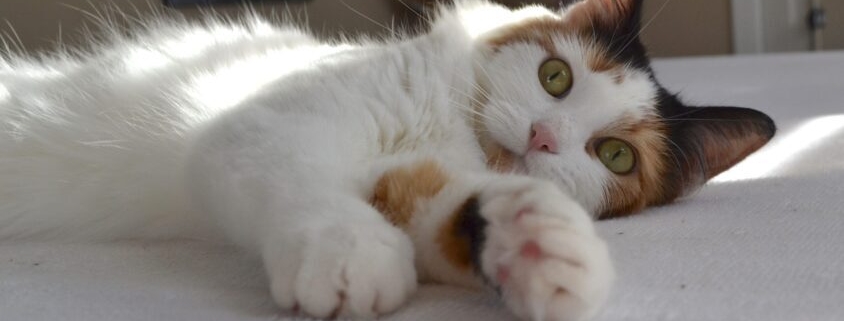6 Steps to Make Your New Cat Feel At Home
Getting a new pet is an exciting milestone for everyone! You’re probably wondering what you can do to make the transition easy and stress-free for you and your new cat. Making a few minor adjustments can go a long way and make the whole transition easier for everyone!
1. Give your new cat or kitten enough time to decompress. Most cats prefer time to themselves to become comfortable with the sights, smells, and noises associated with their new home. This can take weeks or a couple months depending on the cat’s age and background. Let them warm up to you to build their trust and bond. Overcrowding or forcing your new cat to be held can create a skittish cat.
2. Be aware of their diet. Most cats will come on a diet they are already used to eating, and we don’t recommend switching it right away (even though you might want to). Your new cat has already been through plenty of significant changes, and the last thing they need is unnecessary stress from a diet change. Once your cat becomes comfortable, we recommend offering a few healthy options to see what they prefer before switching the diet.
3. Setting up their area. While setting up your cat’s necessities, make sure to keep food and water away from the litter box. Cats are clean by nature and appreciate a clean feeding area.
-
- Easy access to drinking water is essential for cats, especially those eating kibble. Keeping the water bowl separate from the food bowl will encourage your cat to drink. Also, you can place a water bowl in more than one place in the house to promote water consumption.
- If you exclusively feed your cat canned or raw, it is normal for your cat to have little to no water consumption.
4. Meeting other furry family members. If you have other cats in the home, it is best to keep the new kitty in a quiet, safe place for several days to a couple of weeks for both cats to get used to hearing and smelling one other. Once any hissing and growling have decreased, you can feed them on each side of a closed door. Sharing a meal among any species can be a bonding experience that will encourage positive behavior. You may have to repeat this step for several days to a few weeks.
5. Play and Exercise. Once your cat is comfortable in its new home, play and exercise are essential for a healthy and productive lifestyle that can prevent bad behavior from developing. You can provide your cat with a toy that dispenses treats or toys as your cat chases and plays. Several options on the market will provide your cat with the satisfaction of the hunt and catch. Try these out after extensive play when your cat is hungry for stimulating them mentally and physically, which results in a well-exercised and tired kitty!
6. Understand their natural routine. Cats are most active from about 3 AM to 5 AM. Early morning is the best time to hunt, and if your cat were outside, they would be hunting small animals such as mice, chipmunks, birds, and even bugs! However, since most cats are indoor cats, or at least inside at night, their prey drive is directed to toys and small objects. Cats are intelligent animals, and if you let them know that their antics get you up, they will keep making a game out of it. When a cat is new to your home and begins this behavior, it is best to ignore or do your best to prevent the situation. Most owners appease their cats by offering a snack or breakfast during these early morning hours, which only solidifies the thrill and catch of the hunt! For more tips to engage your kitty, click here.






